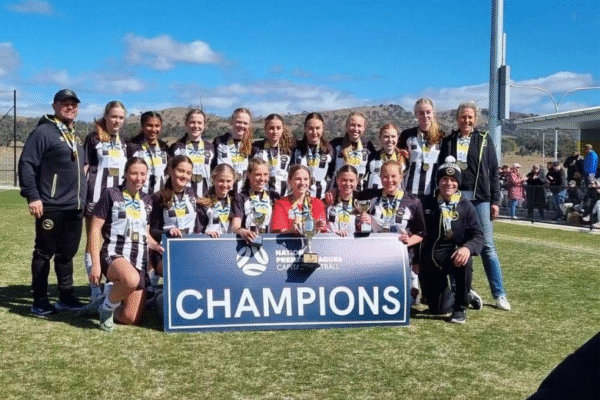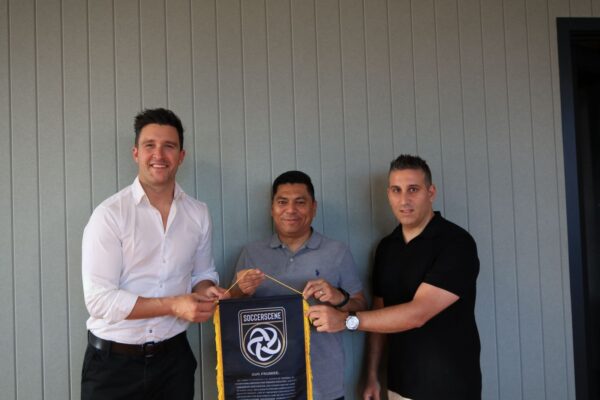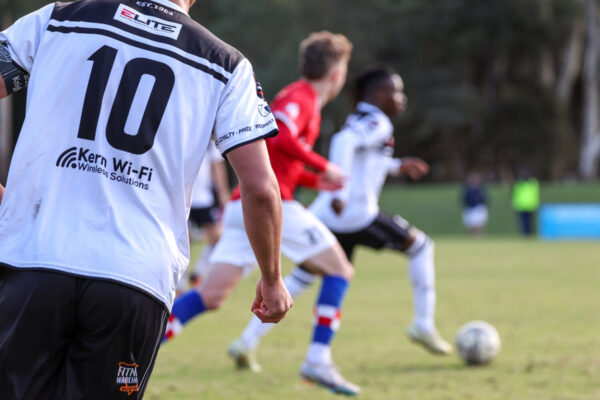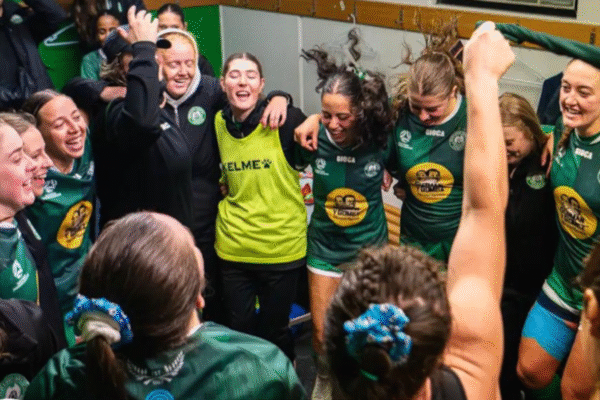
Last Monday night (May 24) saw Football Coaches Australia (FCA), in tandem with representatives from all across the Australian football family, invest their time into a FCA Women’s Football Webinar discussion around the immense challenges facing Australia’s female football coaches in the pursuit of their careers.
The panel discussion, hosted by Aish Ravi, who is currently undertaking a Doctor of Philosophy with a focus on women’s coaching education in football, FCA CEO Glenn Warry and Matildas legend Heather Garriock (FCA Vice-President, Football Australia ‘Starting XI’ representative and current CEO of Australian Taekwondo), aimed to provide insight into the barriers for female coaches in Australian football, and by extension, wider society.
Notably, Heather Garriock’s role as CEO at Australian Taekwondo reflected not just the difficulties in finding roles as a female footballer or coach after one finishes their playing career, but the loss of talented and passionate individuals to roles away from football.
“If we don’t start investing in our females within our game, we are going to start losing them. And as we can see with Heather, we’ve lost someone who’s played over 100 games for Australia and has been a pioneer in the women’s game. For me, that is really sad to see,” remarked Western Sydney Wanderers legend Catherine Cannuli.
Cannuli, who balances her time between her seasonal duties as assistant coach at Western Sydney Wanderers and as the Women’s Technical Director at the Southern Districts Soccer Football Association, admitted to facing a dilemma in how to progress her career to where she wants it to be because of a lack of stability in women’s coaching roles that are typically part-time.
 “For me now, I’m in a very hard place. Being a new mother, having to worry about my son now and wanting to have that stability, if I want to progress my career and make the step towards becoming a full-time head coach in a professional environment,” she said.
“For me now, I’m in a very hard place. Being a new mother, having to worry about my son now and wanting to have that stability, if I want to progress my career and make the step towards becoming a full-time head coach in a professional environment,” she said.
“For me, I’m in a very stable situation with my association, but is it where I want to be? If I want to progress as a head coach and get into that professional side, do I take stability in my full-time role or do I take the risk in becoming a head coach in a part-time role?”
Perth Glory legend and manager of Bristol City through three Women’s Super League (WSL) seasons since 2018, Tanya Oxtoby, acknowledged that despite the fact that the WSL is a full-time setup there are some critically similar challenges facing both the W-League and WSL.
“It’s a full-time role. All the players are full-time, all the stability that Catherine was talking about, we have that. But there are still similar barriers in having to fight for those rights every single day. And that’s a shame that in 2021 we are still having to push the boundaries and ask for what is fair. It doesn’t come voluntarily and that’s a shame unfortunately,” she said. 
And in response to Garriock pondering what is fair, Oxtoby conveyed: “For me, I’ve just had a little boy and changing attitudes towards coaches, whether you’re a female coach coaching men’s football or women’s football, has to change. That for me is what’s fair; seeing people through equal eyes and that does not always happen. Trying to educate people on what’s appropriate and what’s not, it’s difficult, and you’ve got to be a strong character to go through that.
Aish Ravi, in her studies on the experiences of female coaches in Australia, has worked to understand the strategies that can be formulated to overcome these challenges.
“From what I understand, the literature tells us that women are underrepresented in coaching football and there are very few women in some of these positions from coaching all the way through to analyst positions and to Technical Director positions,” she said.
“In terms of lived experience, from what I understand and what the literature says, women do feel highly scrutinised in some of these positions and there is a pressure to overperform and gain credibility. And sometimes that can be afforded to others as opposed to some women. So, we do need to find out what these strategies are in the context of the unique Australian footballing landscape, as they can then be provided to inform these organisations on how to improve the space for women coaches.”
What proved to be particularly pertinent was the lived experience of an attendee in the webinar.
As a female coach making the transition between working in a major city’s footballing environment to the setup in a smaller rural town, the attendee remarked how astronomically challenging it is to grow the women’s game because of a lack of initiative on the part of the outfit who runs football there. And critically, the opposition to change stems from a board that is bereft of female representation.
Ros Moriarty, Chair at the Football Australia Women’s Council and Managing Director and Co-founder of John Moriarty Football, spoke on the inequality in workplace culture in Australian football.
“A workplace is a workplace, and football is a workplace. If a coach is being paid for her work, then she can expect that a workplace will have the basic tenants that we all hope and wish for, and fight for; that you don’t have to ask for things that are simply part of you doing your job,” she said.
“Culture is about attitude and it’s about respect, but I think culture also plays into structure. We have a problem in Australia because we don’t have a full home and away season for the W-League, so coaching in the W-League isn’t full-time. So, the Women’s Council have been pressing for a really long time about making sure under the new arrangements with the clubs that full home and away eventuates.”
With a Women’s World Cup to be co-hosted by Australia and New Zealand in 2023, the time to start delivering on the passion for the women’s game is now, not in two years when it is beneficial to a select few in the short term. There is impetus, as there always has been, for all stakeholders to help lead change in the women’s football space.
And despite the fact that the resilience of Australia’s female footballing contingent has been perpetually undervalued all throughout its history, there remains a constant drive and determination to instigate change in Australia football for players and coaches. Discussions, like the one that took place on Monday, mirror this sentiment. Moreover, it is essential for Australian football’s variety of stakeholders to take in and to learn from the discussion that was had in order to aid in the fight for equality in Australian football.



















